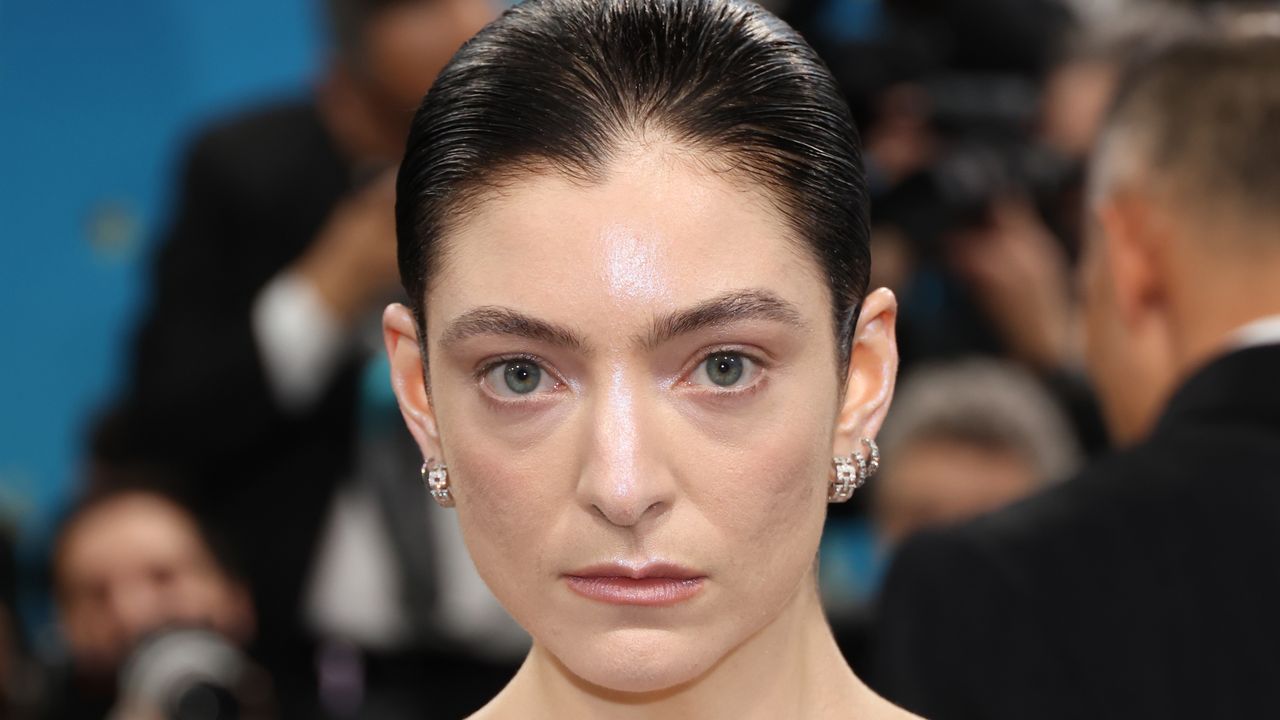When a musical artist announces, promotes, and tours with a record these days, the whole thing tends to revolve around their look—a hot new look, at that. Sabrina Carpenter’s acclaim skyrocketed after she fully embraced the sexy baby fantasy with Farrah Fawcett curls and tiny lacy frocks for Short N’ Sweet. Beyoncé started a global conversation about Black people’s place in country music—and grossed hundreds of millions of dollars in concert ticket sales—by channeling a rodeo aesthetic for Cowboy Carter. K-pop singers such as Jennie embody a rigid, futuristic beauty standard that leaves no room for imperfection—in her “Like Jennie” music video, for instance, where she’s seen floating in space in a full beat, not a pore in sight.
And then there’s Lorde.
As she’s ramped up to the release of Virgin, Lorde has been showing up sunburned, frizzy-haired, and sometimes even a little sweaty while performing live, posting on social media, and starring in music videos. Her hair hasn’t been styled to perfection, and she’s been satisfied to let its naturally frizzy texture do its own thing when it hasn’t been tied back. She’s rarely worn makeup (she even kept it minimal at last month’s Met Gala), revealing pores, fine lines, dark circles, and all sorts of other normal skin textures for a 28-year-old to have. In addition, her wardrobe has revolved around comfort lately, with thrifted dress shirts and soft cotton tees.
Lorde has never fully subscribed to the mainstream beauty machine, for what it’s worth. In her Royals era, she leaned into goth lips, pale skin, and the allure of Tumblrcore, aligning more with alt-girls than her Top 40 peers. Through her Melodrama and bohemian-coded Solar Power days, she maintained that understated approach. Her Virgin phase, though, feels less low-maintenance and more anti-maintenance. Lorde’s not here to look good. She’s here to feel her feelings and relate through music. In doing so, she’s turning the pop archetype of perfection on its head.
Her current aesthetic feels like a direct challenge to the algorithm-optimized faces we’ve come to expect and at times even demand from female celebrities—and honestly, we need that challenge right now. Pop stars usually go through aesthetic evolutions from album cycle to album cycle—or “eras” as we now call them. These reinventions once felt like performance art, thanks to people like Lady Gaga, who brought new and unique styles of hair, makeup, and wardrobe to every new album, video, and tour for added entertainment value. But now that constant reincarnation has proved itself a powerful marketing tool, it’s become a non-negotiable for an enduring music career, especially for women.
And sexuality often plays a big role in these continual makeovers, which sometimes serves as a subconscious visual cue that a musician has matured—like how Ariana Grande ditched her oversized hoodie schtick in favor of bralettes and miniskirts during her Thank U, Next era—or how Taylor Swift has gone from country sweetheart to femme fatale to full-blown pop diva through her various album cycles.

